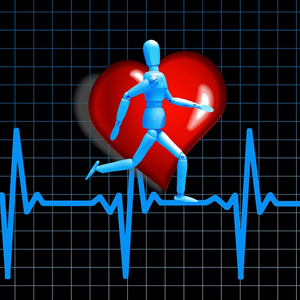Prescription Drug Abuse Increasingly Seen as a Major US Public Health Problem
The headline above is from a PEW Research Center article published on November 15, 2017. According to Wikipedia, "The Pew Research Center is a nonpartisan American think tank based in Washington, D.C. It provides information on social issues, public opinion, and demographic trends shaping the United States and the world."
 Lately, there has been more
stories on the issue of prescription drug abuse. Although
most of the focus has been on opioid abuse, there have been
a number of stories about the overuse of prescription drugs
in general. The abundance of stories, coupled with recent
Washington proclamations and mandates, have made the public
more aware of this issue. However, though the public begins to
recognize the increasing importance of this issue, the
numbers of fatalities and cost of the crisis continues to
grow.
Lately, there has been more
stories on the issue of prescription drug abuse. Although
most of the focus has been on opioid abuse, there have been
a number of stories about the overuse of prescription drugs
in general. The abundance of stories, coupled with recent
Washington proclamations and mandates, have made the public
more aware of this issue. However, though the public begins to
recognize the increasing importance of this issue, the
numbers of fatalities and cost of the crisis continues to
grow.
The press release from the PEW on this issue begins by noting, "Americans' concerns about prescription drug abuse have risen over the past four years, with some of largest increases coming among well-educated adults." The PEW research points out that currently, 76% of the public see prescription drug abuse is an extremely or very serious public health problem.
This number is a significant increase from just a few years ago. In 2013, only 63% considered prescription drug abuse to be as serious as they do today. The study notes that the largest gains in awareness have come from those who have a higher education level, but equally for Democrats and Republicans considering political breakdowns.
The perspective of Americans concerning other health issues has remained fairly consistent from 2013 to today. Similar now to 2013, about 80% of Americans see cancer as a serious health issue. Additionally, the numbers remain steady with other issues such as obesity, where 71% see this as a serious health concern, as do 52% of the population with respect to alcohol and 51% for smoking.
Interestingly, the PEW survey did note that there were differences in the views on this issue based upon race. According to the study, 79% of whites saw prescription drug use as a serious concern, but only 73% of non-whites felt the same way. The difference was more pronounced for other health issues, where 66% of non-white Americans felt smoking was an extremely serious or very serious health issue compared to only 42% of whites who viewed smoking the same way.
Even though there is an increased awareness of this issue, the problem continues to grow. The CDC lists on their website that since 1999, the number of drug death has quadrupled. Between the years 2000 and 2015, more than half a million people have died from drug overdoses. Opioids account for the largest portion of these deaths with approximately 91 Americans dying every day from an opioid.
 Although MS can develop at any
age, it is most common between the ages of 20 and 40 years.
The Multiple Sclerosis Foundation estimates that
there are more than 400,000 people in the United States
suffering from MS. Worldwide that number is about
2.5 million people with MS. About 200 new cases are
diagnosed each week in the United States alone.
Although MS can develop at any
age, it is most common between the ages of 20 and 40 years.
The Multiple Sclerosis Foundation estimates that
there are more than 400,000 people in the United States
suffering from MS. Worldwide that number is about
2.5 million people with MS. About 200 new cases are
diagnosed each week in the United States alone.  Since having a high HRV is good,
the purpose of this study was to see if chiropractic care
could improve the HRV score on a group of patients. The
heart rate is controlled in part by the autonomic nervous
system. Anything that changes the HRV is a reflection on the
function of the autonomic nervous system. The premise of
chiropractic is correction of subluxations that cause
interference with the function of the nervous system.
Correction of subluxations allows the nervous system to
function free of inference and should therefore have a
positive affect on HRV scores on patients.
Since having a high HRV is good,
the purpose of this study was to see if chiropractic care
could improve the HRV score on a group of patients. The
heart rate is controlled in part by the autonomic nervous
system. Anything that changes the HRV is a reflection on the
function of the autonomic nervous system. The premise of
chiropractic is correction of subluxations that cause
interference with the function of the nervous system.
Correction of subluxations allows the nervous system to
function free of inference and should therefore have a
positive affect on HRV scores on patients.  In this case, a 34-year-old woman
with metastatic melanoma presented herself for chiropractic
care. The woman had been previously diagnosed with
metastatic melanoma and treated medically. After treatment,
she was declared cancer-free.
In this case, a 34-year-old woman
with metastatic melanoma presented herself for chiropractic
care. The woman had been previously diagnosed with
metastatic melanoma and treated medically. After treatment,
she was declared cancer-free.  Adolescent
idiopathic scoliosis (AIS) affects about 5.2% of children
and adolescents and is the most common spinal disorder in
the age group. When severe, AIS is treated
medically with spinal surgery. This type of surgery is a very involved process that should only
be used in the most severe cases and after all other methods have
failed. Conservatively, AIS is treated using physical
therapy, exercise, bracing and chiropractic. The goal of
care for AIS is to stop the curve from getting worse or to
reduce the curvature if possible.
Adolescent
idiopathic scoliosis (AIS) affects about 5.2% of children
and adolescents and is the most common spinal disorder in
the age group. When severe, AIS is treated
medically with spinal surgery. This type of surgery is a very involved process that should only
be used in the most severe cases and after all other methods have
failed. Conservatively, AIS is treated using physical
therapy, exercise, bracing and chiropractic. The goal of
care for AIS is to stop the curve from getting worse or to
reduce the curvature if possible.  In this case, a 39-year-old woman
presented herself to a chiropractic office accompanied by
her parents and an aide. Her first symptoms of MS began at
age 19, when she first became partially blind in one eye. She
was partially blind for several months and nearly lost her
ability to see. She was then diagnosed with MS by a
neurologist and confirmed by an MRI which showed active
plaque formation. The woman was given prednisone which
seemed to help for a while. One year later, the woman began
to lose her ability to walk. Her legs continued to feel weak
and she started feeling fewer sensations in the legs,
upper body, hands and arms.
In this case, a 39-year-old woman
presented herself to a chiropractic office accompanied by
her parents and an aide. Her first symptoms of MS began at
age 19, when she first became partially blind in one eye. She
was partially blind for several months and nearly lost her
ability to see. She was then diagnosed with MS by a
neurologist and confirmed by an MRI which showed active
plaque formation. The woman was given prednisone which
seemed to help for a while. One year later, the woman began
to lose her ability to walk. Her legs continued to feel weak
and she started feeling fewer sensations in the legs,
upper body, hands and arms.